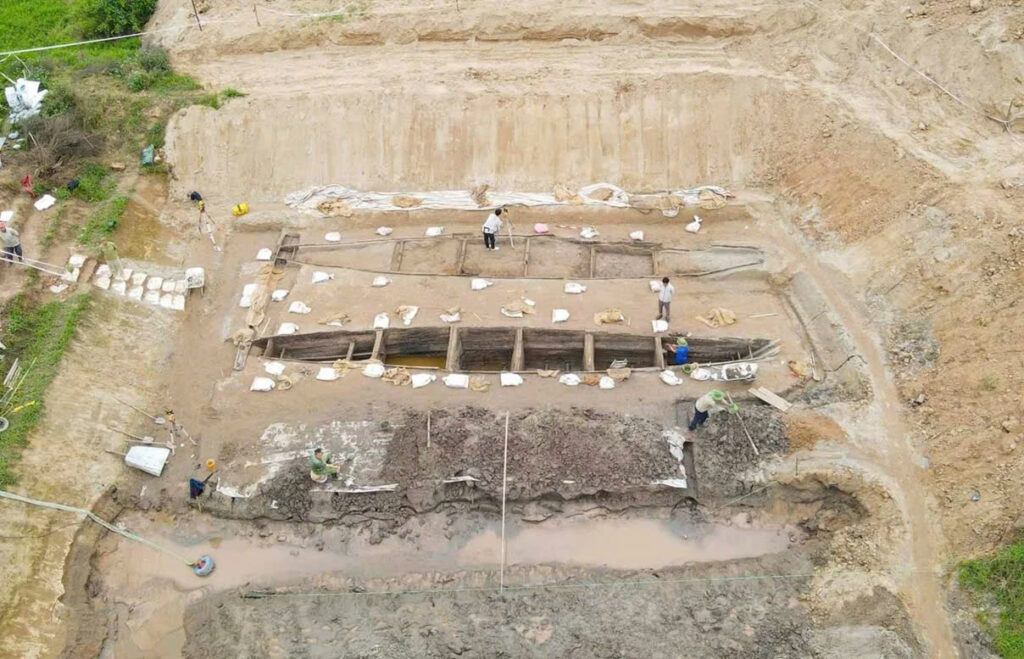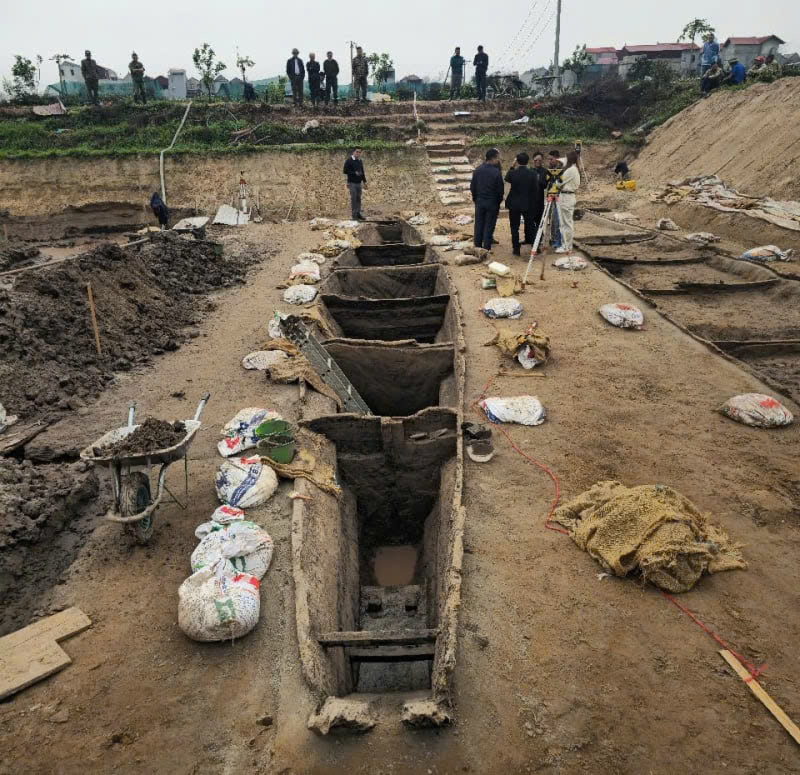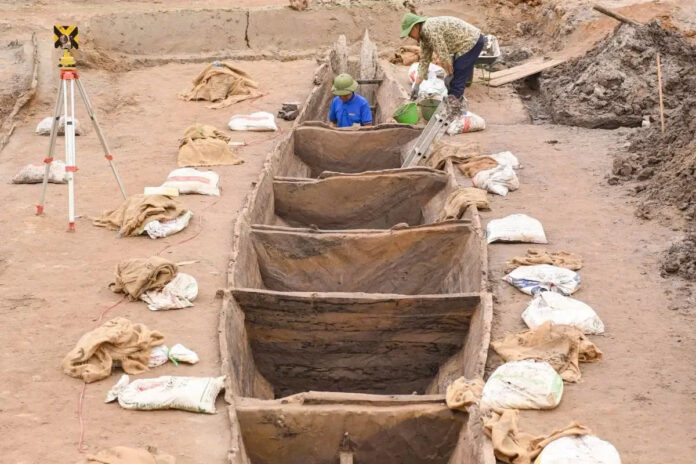In an extraordinary archaeological find that has captivated historians and locals alike, two remarkably preserved wooden vessels have emerged from beneath the waters of a quiet fishpond in northern Vietnam, potentially shedding new light on the region’s rich trading history.
Unexpected Discovery Reveals Historical Treasures
What began as a routine pond renovation in Thuận Thành town, Bắc Ninh Province, quickly transformed into an archaeological sensation when local residents stumbled upon wooden structures buried beneath the mud. Upon realizing the potential significance of their find, they promptly alerted authorities, triggering an immediate response from the Institute of Archaeology.

The vessels, lying just two meters apart from each other, have surprised experts with their impressive dimensions and preservation state. The larger vessel measures an impressive 15 meters in length and 2.2 meters in width, while its companion spans 14 meters long and 1.6 meters wide. Perhaps most intriguing is the wooden bar connecting their bows, suggesting these vessels may have been deliberately paired to navigate the waterways as a single unit.
Video
Linking Vietnam’s Ancient Maritime Trade Routes
“This is a historically and culturally significant discovery,” notes Dr. Pham Van Trieu, Deputy Head of the Department of Historical Archaeology at the Institute of Archaeology. “While the boats’ exact age remains unknown, if they are dugout canoes, they could date back to an early period in history.”

The location of the discovery adds crucial context to their potential significance. The vessels were found near the Thien Duc-Duong River, which flows in proximity to the ancient Luy Lau Citadel—once a bustling trading hub and the first capital of the Han commandery of Jiaozhi. This strategic positioning strongly supports the theory that these were merchant vessels that once carried valuable goods along Vietnam’s historic waterways.
Preservation Efforts Underway

What has particularly excited archaeologists is the remarkable structural integrity of both vessels despite their age. While experts continue analyzing the construction materials to determine the precise age and type of wood used, the initial assessment indicates the vessels have withstood the test of time with extraordinary resilience.
Recognizing the potential historical importance of this find, Mr. Vuong Quoc Tuan, Chairman of the People’s Committee of Bac Ninh Province, has directed local authorities to commission comprehensive studies to evaluate the vessels’ full historical significance. Additionally, protective measures are being implemented to preserve this unexpected window into Vietnam’s maritime trading past.
As archaeologists delve deeper into the mystery of these ancient vessels, the discovery represents not just a fascinating glimpse into historical shipbuilding techniques, but also a tangible connection to the vibrant trading networks that once defined this region of Southeast Asia.

